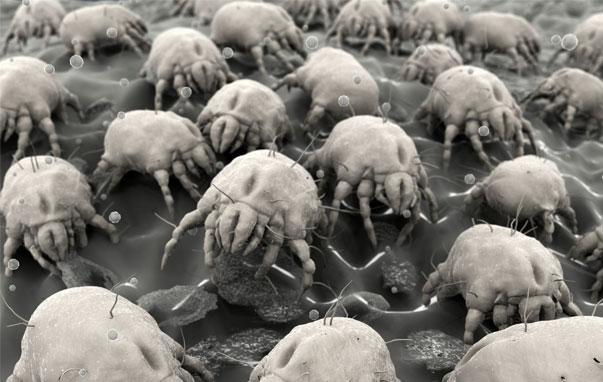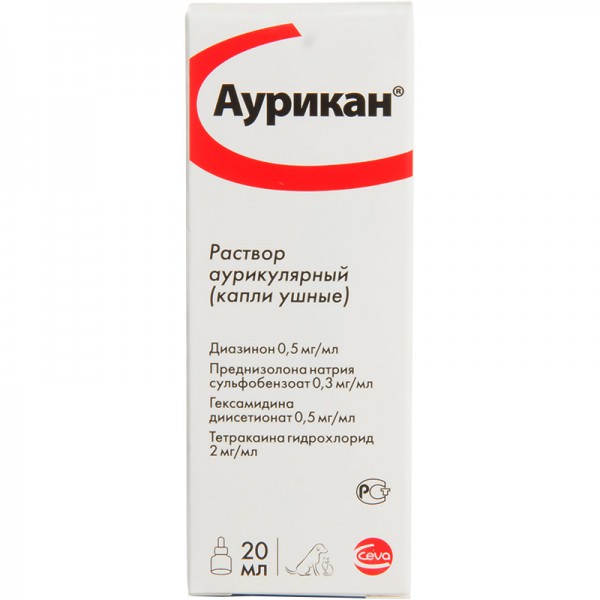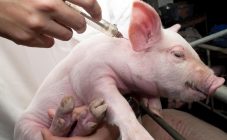Content:
Rabbits, like any other animal, can be susceptible not only to viral infections, but also to parasitic diseases. This kind of ailment includes ear scabies, caused by the fact that a microscopic parasite - the psorotes cuniculi ear mite - is found in the rabbit's auricle. The disease is called psoroptosis.
Ways of infestation with ear mites and its developmental phases
Ear scabies is a fairly common disease. It can appear at any time of the year. It is accompanied by severe itching, inflammatory processes in the ears, and in especially advanced cases can contribute to the development of meningitis and the death of the animal.
Infection with ear mites in rabbits occurs as follows:
- when a sick animal comes into contact with a healthy one;
- from an infected rabbit to a rabbit;
- when planting a healthy individual in a cage where a sick animal was previously kept;
- through contact with a person on whose clothes or shoes the parasite is present.
The psorotes parasite has a body size of about 0.6 mm. The oval body of the tick is almost impossible to see with the naked eye. It lives and reproduces exclusively in the auricle of the rabbit; it is not on other parts of the body.
This type of mite does not dig holes under the skin of the animal, as it is a cutaneous parasite. Its life cycle can be divided into four stages:
- Egg... One female lays up to 5 eggs per day. After four days, larvae hatch from them.
- Tick larvae... It feeds on earwax and skin secretions. This tick condition lasts 3-5 days. Then the larva becomes lethargic and molt occurs.
- Nymph. It has two stages of development: protonymph and teleonymph. The tick stays in this state for 9-14 days. During this time, he actively feeds and mates.
- Imago... The adult state of a tick when the females lay their eggs. Lives 22-24 days.
Thus, the mite parasitizes in the ear of the animal for about one and a half months. During her life, one female can lay up to 20 eggs. You can imagine how fast this disease develops.
There is another causative agent of scabies in rabbits - the sarcoptes cuniculis mite. The main difference between this parasite is that it can spread throughout the body, including the ear. In addition, this species bites into the skin of a rabbit, digs holes there and lays eggs. The affected area becomes thicker to the touch, the skin becomes covered with bumps, and then pustules. The symptoms of sarcoptic mange in rabbits are different from those of psoroptosis, and the therapy is somewhat different.
Signs and symptoms of the disease
The parasite, settling in the ears of the rabbit, gives him a lot of trouble. Signs that a rabbit has an ear mite are clear:
- The animal constantly shakes its head, tries to scratch its ears. Gradually, the animal gets used to itching and begins to pay less attention to it. The apparent improvement in the animal's health may actually mean a transition from the acute phase of the disease to the chronic one.
- Severe redness of the auricles. Over time, wounds and festering appear and the entire auditory canal becomes covered with scabs.
- Large accumulation of earwax. For the most part, these are the waste products of parasites. A healthy rabbit does not need to clean its ears.In a patient with ear scabies, this wax must be removed regularly.
You can find a tick with a magnifying glass. To do this, the sulfur taken from the rabbit's ear must be placed in petroleum jelly, heated to 40 ºС. The parasites float up and can be seen.
Symptoms of psoroptosis without complications
The vital activity of the tick in the ear of the animal stimulates the abundant release of sulfur. The parasite feeds not only on her, but also on lymph, and dead skin epithelium. With psoroptosis at the initial stage of the development of the disease, you can find the following symptoms:
- Very severe itching, loss of appetite, nervousness. If this is a nest, then all rabbits have a similar behavior. They lose weight, lag behind in development.
- There is earwax, but not much. The ear looks healthy after cleaning, but the sulfur crust reappears very quickly.
- An allergic reaction of the animal to the anti-tick medicine - rhinitis, sour eyes.
Symptoms of psoroptosis with complications
If the animal is left untreated, the inflammatory process can be aggravated by bacterial or fungal otitis media. There are a lot of options for the development of this complication, but the main symptoms look like this:
- Itching in the ears is reduced, but scratches appear around them. The severity of damage is different: from scratches to deep damage with scabs and festering.
- A dense crust of scabs and sulfur forms inside the auricle. Discharge often smells bad.
- A liquid appears in the ear - exudate. This indicates that the eardrum is affected. The ear stops itching, painful sensations appear.
- The animal begins to tilt its head to the side, the ear hangs down and a sharp fetid odor appears from it.
Medication treatment
Psoroptosis responds well to treatment. If an ear mite is found in rabbits, home treatment can give excellent results. It is only necessary to select a drug and apply it according to the annotation.
But before using any medicine, you need to clean the ears of the sick animal. This is done not for aesthetic reasons, but exclusively for medicinal purposes. The fact is that the tick lays eggs under the sulfur crust. There are also the larvae of the parasite. Removing scabs and wax has a double effect:
- firstly, the medicine, if it is a spray or ointment, gets on the parasites and their eggs;
- secondly, the metamorphosis cycle will be interrupted.
Of the effective and inexpensive drugs for treating rabbits from ticks in the ears, the following drugs can be recommended:
- Aversectin ointment... A product specially formulated to kill psorotes cuniculi. The active substance is aversectin-s. Especially for rabbits.
- Acaromectin... It is considered ideal in terms of price-quality ratio. The active ingredient is ivermectin 1%.
- Stronghold. Drops from ear scabies. The active ingredient is selamectin.
- Spray celandine maximum. One of the few products available in the form of a spray that is really effective against ear parasites. The active ingredient is pyriproxyfen and fipronil.
Experienced veterinarians also use drugs such as mycodemocide and butox.However, the hobby farmer should not try to treat rabbit ears with these drugs because of their toxicity. Accidental overdose can lead to disastrous results. Although, when used correctly, the result is excellent.
In the event that psoroptosis has given complications in a rabbit, and in addition to a tick in the ears, fungal or bacterial inflammation is already developing, it is problematic to cure the animal with simple preparations. It is necessary to use complex, multicomponent drugs. Some of them are worth mentioning:
- Amitrazine... Inexpensive drops, which include acaricide, dimexide and rapeseed oil.
- Anandin-plus... Contains acaricide, immunomodulator and antibiotic.
- Amit... Contains: acaricide, antiseptic and antiallergenic drug.
- Aurikan... A very good complex remedy, which includes: acaricide, antiseptic, insecticide, anesthetic and antiallergenic agent.
- Deckt... Contains acaricide, antiseptic, analgesic and anti-allergenic agents.
- Ivermek. Available in spray and gel form. Contains ivermectin, lidocaine and wound healing agents.
The listed drugs are far from the entire list of drugs. On sale you can find otoferonol, surolan, psoroptol, acrodex, dikresil and many others.
Another group of very effective drugs comes in the form of injections. The injection is made subcutaneously, in the area of the withers. Some drugs cause a painful reaction, so they must be administered slowly and carefully. There are imported drugs, but they are no better than Russian drugs. Of the advanced injections, it can be noted:
- acaromectin;
- abivertin;
- averse-2;
- ivertin.
Ticks in the ears of rabbits: treatment with alternative methods
There are many popular treatments for ear scabies in rabbits. All kinds of tinctures, grits, powders, which include a variety of foul-smelling ingredients: tar, turpentine, kerosene, camphor oil and plant products. Unfortunately, they do not have parasite-killing properties. But they can cause irritation on the skin, already damaged by tick bites. There is no need to experiment and torment the animal with the application of medically useless, physically irritating drugs.
The only remedy, the use of which can give a positive effect, and which can be attributed to the "folk" is colloidal sulfur. But even here she has a medical analogue of Benzyl benzoate 20%, which, in general, is even better.
Prevention of psoroptosis
To avoid infection of the herd with ear mites, you need to follow simple rules and periodically carry out preventive measures:
- Wash and disinfect cells periodically. At home, a chlorine-containing agent is perfect - whiteness.
- When preparing the nest for the future rounding, thoroughly wash the mother plant, especially in the corners, where the eggs of the tick can persist for a very long time.
- Before mating, both the rabbit and the rabbit should be carefully examined. This isn't just about ear parasites.
- Keep new individuals in quarantine.
Such simple rules will allow avoiding infection of livestock not only with ear mites, but also with many other dangerous diseases.

















